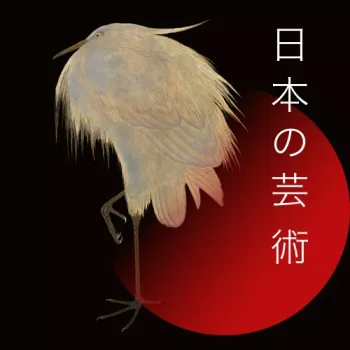Mounted bowl and cover lacquer: 1680-1720, mounts: 1740-1860
Wood decorated in black and gold lacquer, mounted in gilt bronze | 29.8 x 38.7 x 31.4 cm (whole object) | RCIN 3152


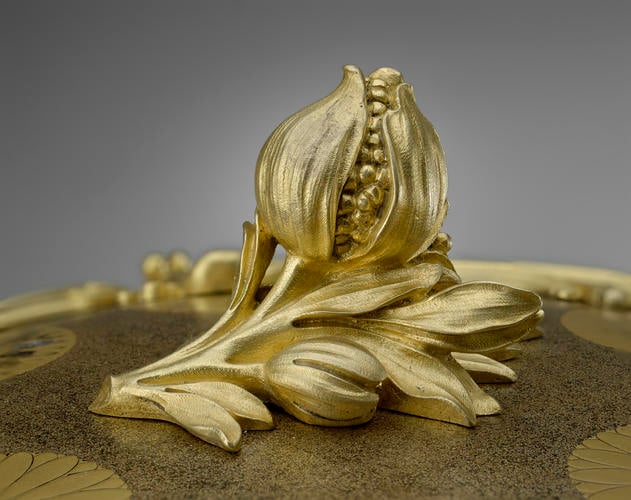
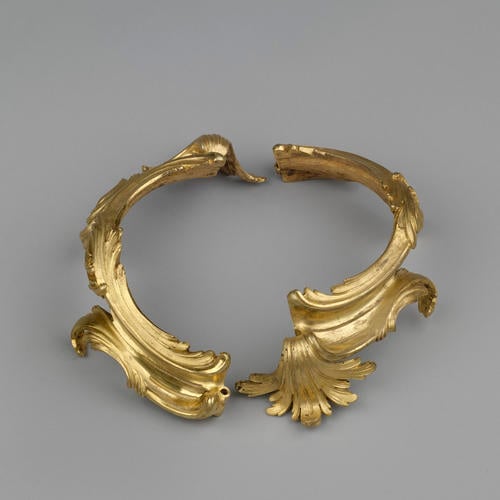
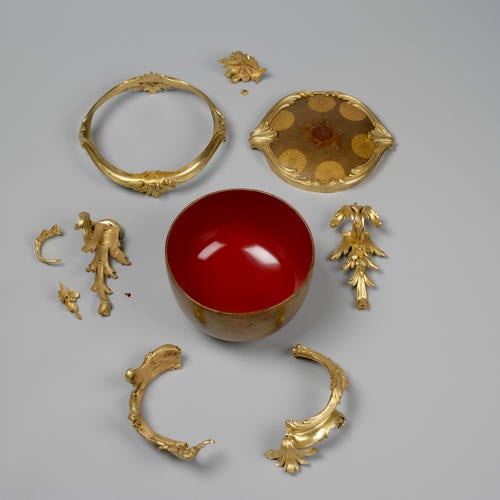
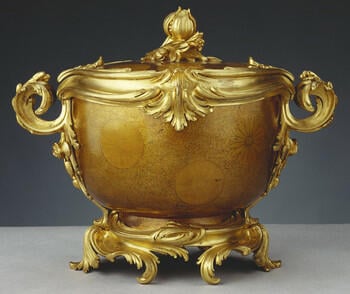
-
Japanese bowl with rising sides rounded below and straight foot. The flat, gently convex cover is somewhat smaller than the bowl. Round the sides, six large chrysanthemum blooms in light gold outlined in black, on a fundame ground, with the same on the cover; the interior lacquered red. The cover fitted with a gilt-bronze berried laurel bud finial. The rim of the cover mounted in a gilt-bronze band, moulded with a symmetrical arrangement of scrolling foliage. The mouth rim of the bowl is similarly mounted, with a deep moulded rim and foliate spray motif in the centre of the front and back. The sides with bifurcated, upscrolling acanthus stem loop handles, with leafy pendants hanging down the sides below the handles to join the base mount, which is a scrolling band of clasping acanthus, with six leaf-scroll feet.
The Chinese had drunk chrysanthemum wine for its health-giving properties since the Han dynasty (206 BC–AD 220), and it is likely that the plant was first imported to Japan for medicinal purposes. Chrysanthemums soon appeared in a variety of decorative arts as symbols of purity and long life. During the reign of Emperor Go-Toba (1180–1239), the 16-petalled chrysanthemum mon was adopted as the Japanese imperial crest. In the centuries that followed, the mon was awarded to certain individuals for outstanding service or loyalty, and it was not until 1869 that the government reserved the symbol for exclusive use by the imperial household. Its appearance here may indicate that the bowl was originally intended for a wealthy patron, for the lacquer is of a magnificent quality not usually made for export.The bowl was almost certainly acquired in France from the dealer Rocheux by George IV’s agent, François Benois, in November 1816. Originally it would probably have served as a rice bowl, but its lavish European mounts have transformed it into a primarily decorative piece. The mounts themselves are an extraordinary feat of delicacy and vigour, styled in the form of scrolling acanthus leaves whose tips appear to bear the full weight of the bowl.
Text adapted from Royal Treasures, A Golden Jubilee Celebration, London 2002, Chinese and Japanese Works of Art in the Collection of Her Majesty The Queen: Volume III and Japan: Courts and Culture (2020)Provenance
Probably purchased by George IV, perhaps purchased in Paris from the dealer Rocheux by François Benois on behalf of the King, November 1816: ‘1 Beau Vase de laque fond avanturine a rosastres avec son Couvercle le tout Montés en bronze doré … 400 [francs]’ (RA GEO/MAIN 26423).
Recorded in the Stores at the Royal Pavilion, Brighton: ‘A fine Japan Bowl & Cover, gold speckled & patera red inside, ormolu leaf & knob, scroll rim, base and handles, eleven inches [27.9 cm]’ (1829B, p. 123); in June 1848, sent to Kensington Palace (1829A, p. 44), and noted in the Picture Gallery at Buckingham Palace in 1921 (1829B, p. 123). -
Creator(s)
(place of production)(nationality)(metalworker)Acquirer(s)
-
Medium and techniques
Wood decorated in black and gold lacquer, mounted in gilt bronze
Measurements
29.8 x 38.7 x 31.4 cm (whole object)
Category
Place of Production
Japan




